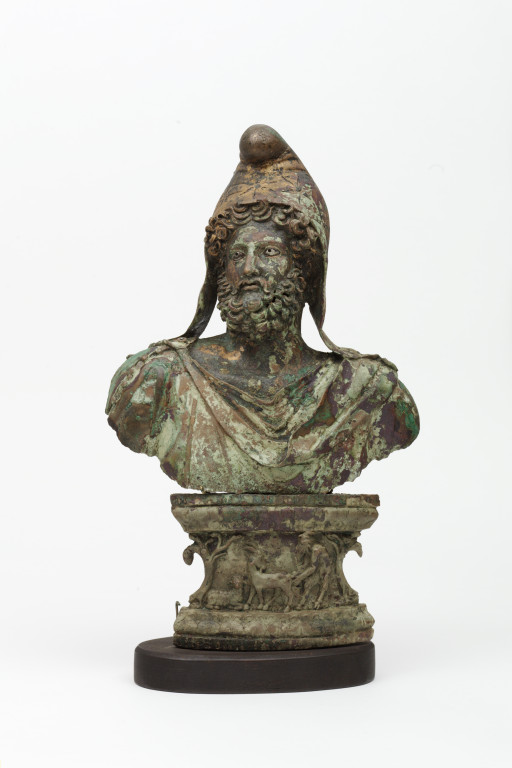If you have read them, it was almost certainly in the classic 1790s translation by Thomas Taylor. Taylor was an excellent translator, and a pagan himself. His translations, however, are often occluded, both by their antiquated language and their 1790s sensibilities. Every translator brings their own biases to a translation, and Taylor's point of view is that of a rich British aristocrat of the 1790s. For example, the Greek word that literally means "bed partner" is translated by Taylor as "bride" when it refers to women and "friend" when it refers to male lovers. It's not just antiquated British sexual mores that color Taylor's translations, he also didn't have available the depth and breadth of understanding of ritual, trance, and entheogenic practices of the Orphic cult that we are only recently recovering.
I'm in the process of retranslating the Orphic Hymns, a project you can learn more about at www.OrphicHymns.com where you can also pre-order a book. My translations try to replicate, in modern English readers, the same feeling produced in initiates by the Greek originals. Like Taylor, I write in the so-called "heroic verse", strongly metered iambic couplets which are the de facto standard for magical chants in the west, and also the usual way Greek dactylic hexameter in translated into English. A working magician myself (you can see more about my magical practice at Mastros & Zealot: Witches for Hire), my translations are specifically designed to be used, as were the originals, as invocations of the gods' presence and force.
Because they are the teachings of an eastern-influenced mystery cult, several of the hymns are dedicated to gods obscure in "mainstream" Greek mythology. For example, Hipta, Mise, and Melinoe were entirely unknown by those names save for their Orphic hymns until their names were found on ancient temples excavated in Anatolia in the late 20th century. The hymn I'd like to share with you today is not quite so obscure as that, but is, perhaps, not a god you know.
Sabazios is the great Horse Lord of the Thracian/Phrygian (modern Turkey) steppes. If you imagine a deified Khal Drogo, you're in the right ballpark. His worship was ecstatic, and almost certainly involved the small mushrooms we call "liberty caps" (Psilocybe semilanceata), but which were, of old, called "Phrygian hats". You can see an image of Sabazios wearing a the aforementioned hat on the left, and the mushrooms on the right.


In Greece, Sabazios was often syncretized with both Zeus and Dionysus. Below, I present my first draft of a translation of his Orphic Hymn, usually considered very obscure. I believe I can explain every part of it by adding some scare quotes. I have deviated from the traditional translations, but kept as close as possible to a literal understanding of the Greek. Several notes explaining my choices are below.
Orphic Hymn #47: For Sabazios
Listen to your daughter, the rebel rhapsode,
Forefather Sabazios, glorious daimon of old.
You’re the father of Bacchus, and the son of cruel Kronos,
Wailing, you “stitched up your thigh” to become Dionysus,
When you came to the rites of Tmolos's peak,
And took your place beside Hipta, of beautiful cheek.
High king of Phrygia, blessed guardian of all,
Be gracious to your initiate when she comes to call.
NOTES:
"Rhapsode" is a greek word for "bard". It literally means "stitcher of stories". You'll see the root "rapsos" or ῥάψις which means "sew" below. This line is my own invention, it is an expansion of the "Κλῦθι" or "Listen Up!" which begins this hymn.
"Eiraphiotes" is usually an epithet of Dionysus, of contested etymology. A likely false folk etymology comes from ῥάψις (to stitch), and that word play was probably intended here.
In some other literature of the ancient Mediterranean (including Torah), "thigh" is a euphemism for male genitals. I believe it is here as well.
Mt. Tmolos, pictured below, is now called Mt. Bozdağ. It is in Izmir, Turkey. It is named (in Greek) after Tmolos, the oak-clad mountain king, and son of Ares. He was the first husband of the demigoddess Omphale who is most famous as the dominatrix of Hercules.
At Mt. Tmolos, and many other holy mountains in Lydia, Cybele (the great Mother of Mountains) was worshipped under the name Hipta, which is a Greek form of Hepat, the Great Goddess of the Hurrians. Hipta/Hepat an eastern Great Goddess, was virtually unknown except in the Orphic Hymns (the next hymn, #49, is addressed to her) until 20th century excavation in Anatolia rediscovered her inscribed into the walls of a very early neolithic temple. We know very little about her worship, but it was almost certainly very similar to that of Cybele.
The consecration ritual of a priest of Cybele is self-castration during ecstatic (often called "Bacchic" in Greek) frenzy.
LITERAL TRANSLATION
Κλῦθι πάτερ, Κρόνου υἱέ Σαβάζιε κύδιμε δαῖμον
Listen! father Kronos son Sabazios, glorious daimon
ὃς Βάκχον Διόνυσον ἐρίβρομον εἰραφιώτην
Who Bacchus Dionysus loud-shouting Eiraphiotes
μηρῷ ἐγκατέραψας
Thigh stitch together entrails
ὅπως τετελεσμένος ἔλθοι
so that consecration ritual come
("telesmos", which I have called a "consecration ritual" could be rendered even more literally as "talisman making")
Τμῶλον ἐς ἠγάθεον παρὰ θ’ Ἵππαν καλλιπάρῃον
Tmolos toward most-holy beside Hipta pretty-cheeked
ἀλλά, μάκαρ, Φρυγίης μεδέων βασιλεύτατε πάντων
But blessed Phrygian guardian big-king everything
εὐμενέων ἐπαρωγὸς ἐπέλθοις μυστιπόλοισιν
Gracious helper approach preforming mystic rites
No comments:
Post a Comment